Launches
June 8th 7:38:04pm EDT
(STS-117 lands at Edwards Air Force Base June 22, 2007)
This page is dedicated to the memory of Mike Dornheim who passed away 1 year ago on June 3, 2006.
Many of my photographic accomplishments I owe to Mike and his aviation knowledge. But more importantly I could call him anytime and discuss all kinds of topics for hours at a time.
For every Aviation Week Cover shot (not to mention the many inside) I've taken from the air, Mike was the pilot.
Many of you know about the B-2 photos and the story behind it, but there are many of other photos that are not on my web site. One in particular was when we flew to NASA's Johnson Space Center and, with limited time, Mike let me go ahead of him to fly (from the left seat) the full motion Space Shuttle Simulator from launch until landing while he video taped it! I could go on and on but I just wanted to say that Mike was just a terrific person and was such superb engineering writer for Aviation Week & Space Technology. At the bottom of this page is the tribute that appeared in Aviation Week after is passing.
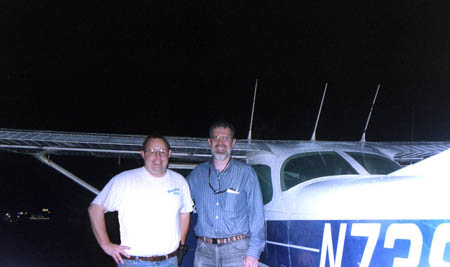
Click here to read about the STS-117 Mission!
Click here to see my STS-117 landing photo's!
Click here to see Atlantis/747 depart Edwards AFB!
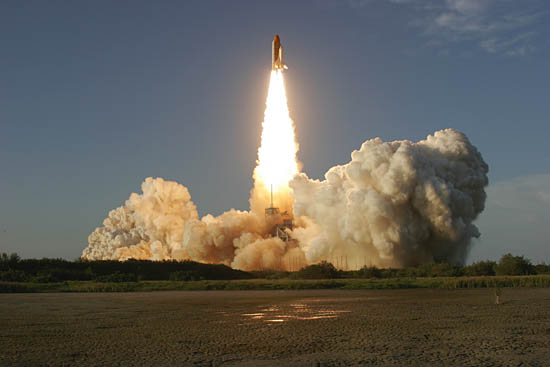
A beautiful early evening launch about 45 minutes before sunset.
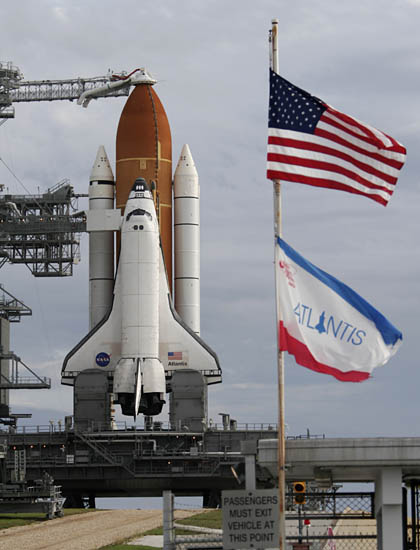
STS-117 Atlantis morning of the launch.
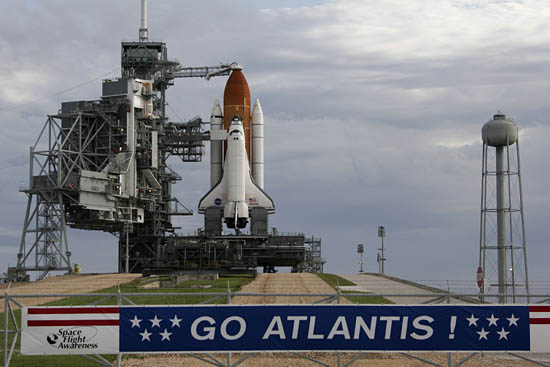
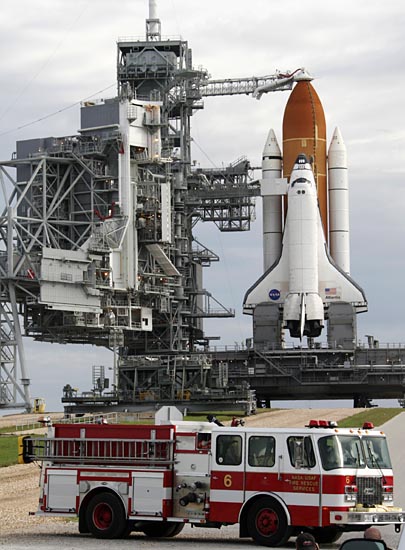
Engine 6 departs pad less than 12 hours until launch.
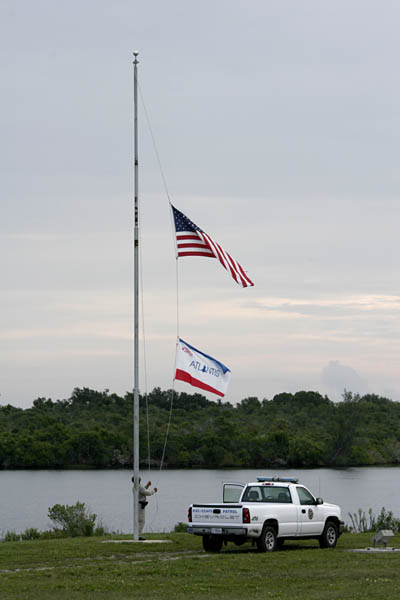
Atlantis's flag is raised on launch day!
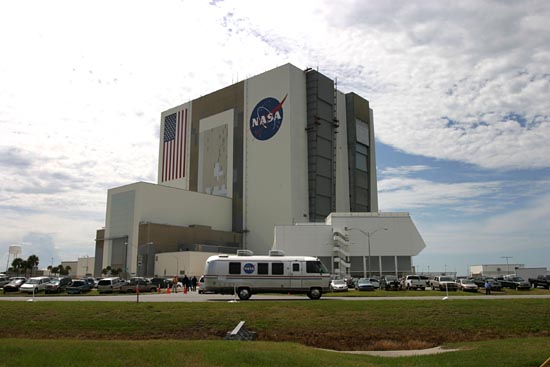
The Astro-Van heads out to Pad 39A about 3.5 hours before launch.
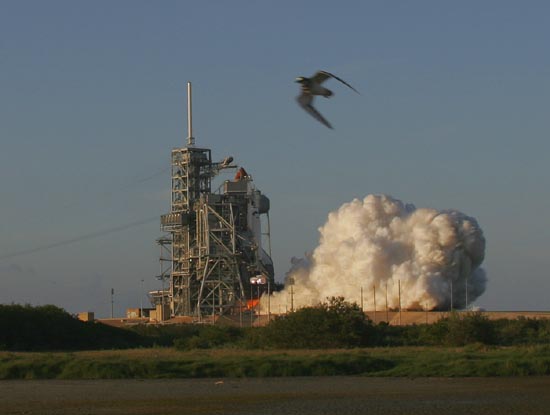
Space Shuttle Main Engine start!
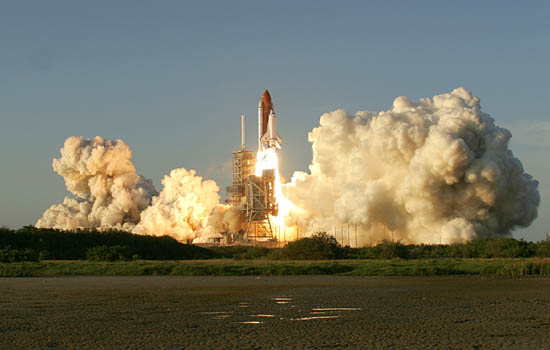
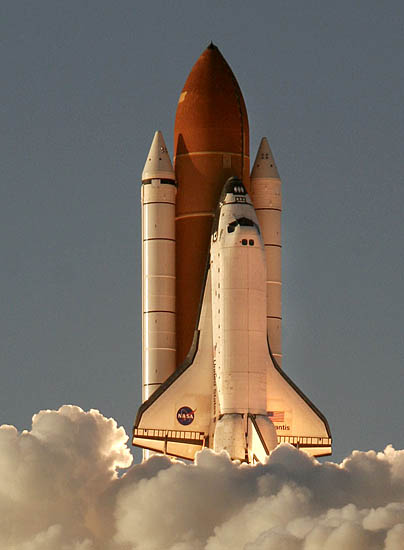
Liftoff at 7:38:04pm EDT!
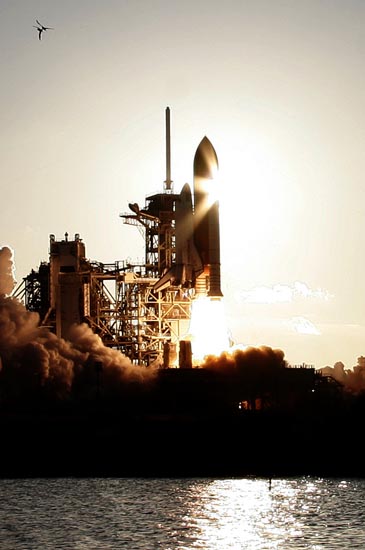
Two birds scatter as Atlantis climbs pass the sun.
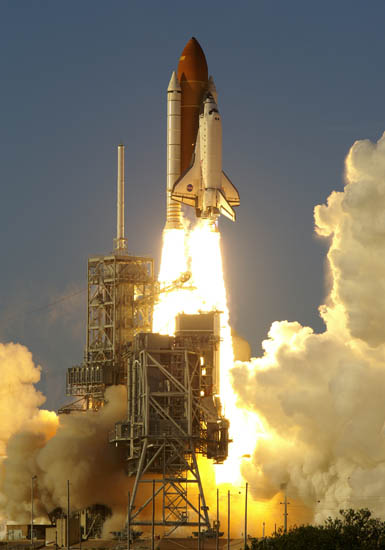
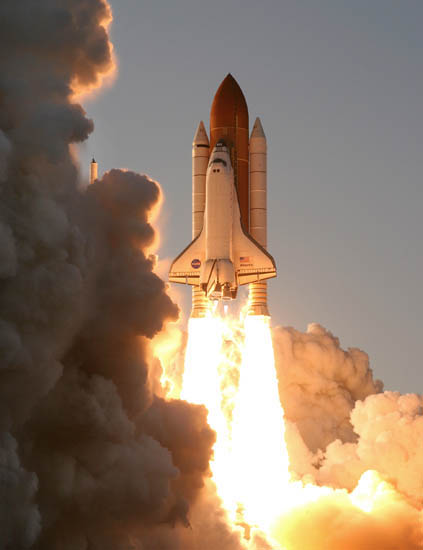
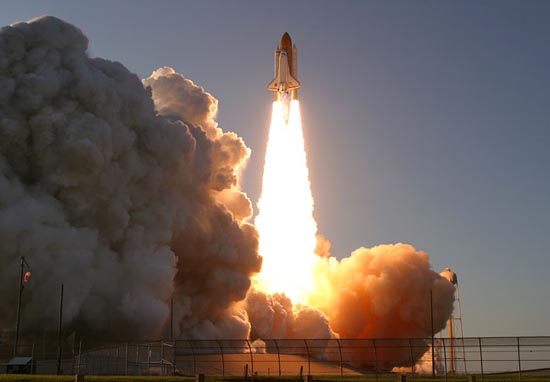
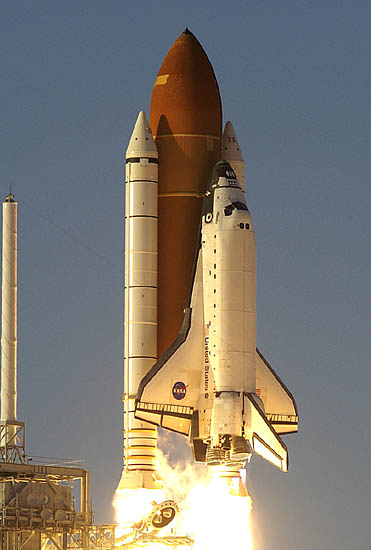
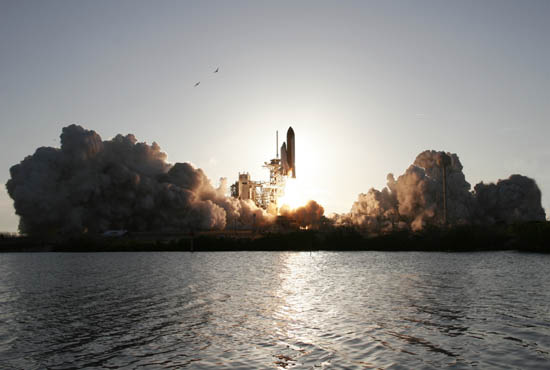
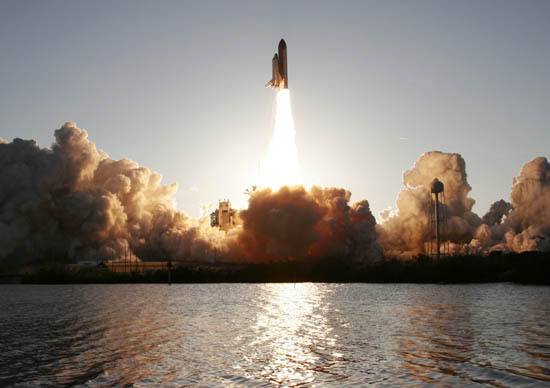
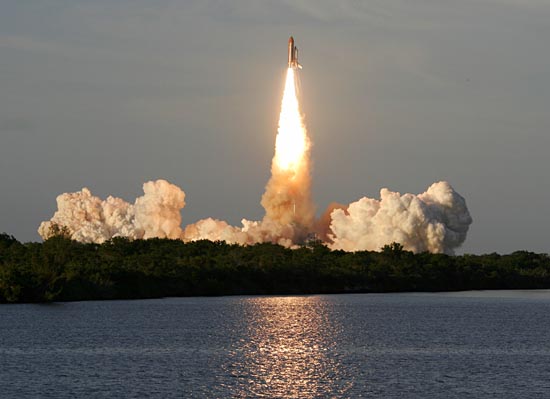
This photo and the ones below were all shot from the KSC Press site about 3 miles away.
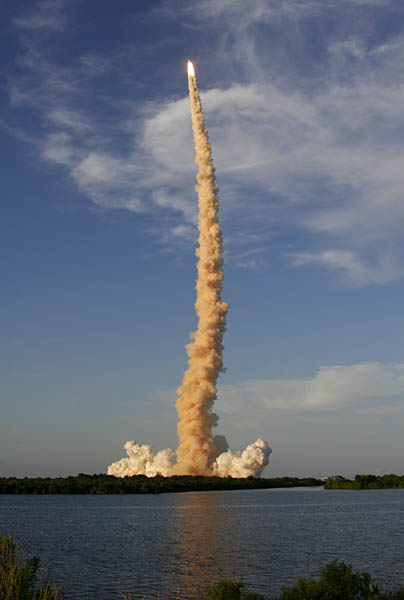
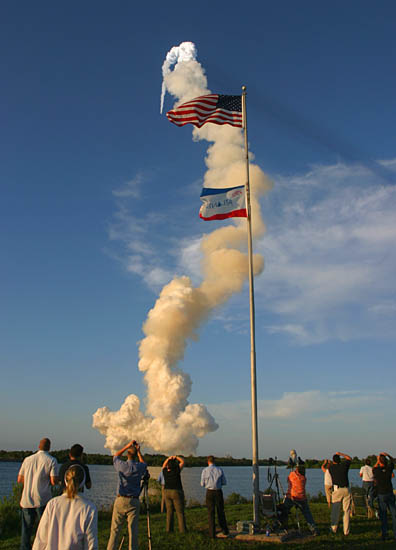
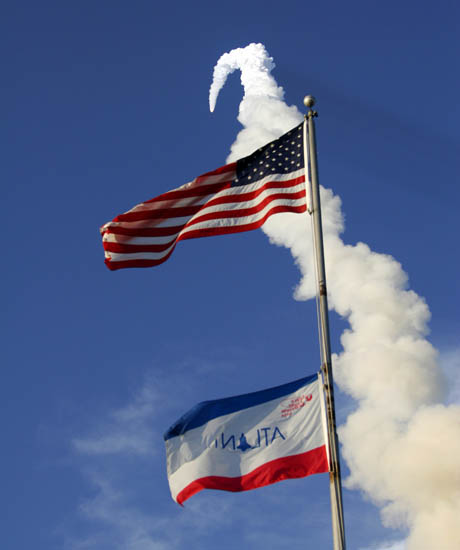
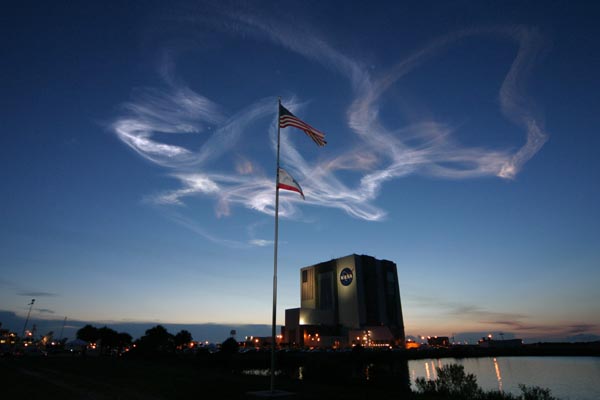
A spectacular twilight effect in the west sky after launch and was almost as beautiful as the launch!
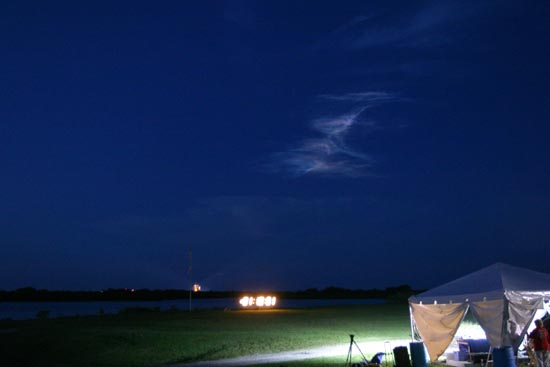
One hour 10 minutes after launch there was another twilight effect to the east of empty pad 39A.
(Aviation Week & Space Technology)
A Tribute
Michael A. Dornheim 1954-2006
He may have been the world's only forensic engineering journalist. Michael A. Dornheim, who joined this magazine 22 years ago and died this month, could explain better than any other journalist how things fly in the atmosphere and in space--and, more importantly, why they sometimes don't fly right.
Dornheim, who was both our Los Angeles bureau chief and senior engineering editor and whose last article was the June 5 cover story, was killed on the night of June 3, when the car he was driving plunged into a steep ravine in the Santa Monica Mountains. He was 51.
Dornheim brought to all his work the qualities Aviation Week & Space Technology editors and readers value most--accuracy, balance, clarity and, above all, technical insight. Over the years, he won a slew of prizes including three Journalist of the Year Awards from the U.K.'s Royal Aeronautical Society. He's a finalist for yet another this year.
The depth of Mike Dornheim's technical understanding on almost every subject this magazine covers was unsurpassed among the staff. Occasionally, it was unexcelled, period. His reporting likely has helped save lives. He wrote about virtually every major air safety issue of the past two decades. His work on fly-by-wire flight controls, composite structures and fuel tank explosions is cited among the best analyses on the subjects, not just in journalism but in the technical literature as well. When a NASA administrator vented his frustration with "foam-ologists" who were second-guessing the agency's efforts to keep the space shuttle's external tank from shedding insulation, we were pretty sure he was fuming about Dornheim's stories. Mike was right, of course, and NASA is still working on the problem.
Such reportage would have been enough to make him a valuable asset here. But Mike also had the greatest breadth among our reporters. He could write with authority on the aerodynamics of forward-swept wings one week, the volcanology of a Jovian moon the next.
The holder of degrees in mathematics and aeronautical engineering from Stanford University, Dornheim began his career in industry. He worked at Boeing on the 757 program and the company's wind shear task force.
Joining the magazine's L.A. bureau in 1984, he quickly earned both colleagues' and readers' respect. One industry PR man tells of setting up an interview for Mike with a manager of a large, complex program. After Mike left, the manager opined that "Dornheim didn't really know what he was talking about." Months later, the PR guy recalls, "Events made it clear it was the manager, not Mike, who really didn't know what he was talking about."
One of Dornheim's best known scoops involved flying and photography more than research and reporting. In 1988, the B-2 stealth bomber was to be rolled out at Palmdale, Calif., for its first public viewing. But U.S. officials considered any glimpse of its saw-tooth trailing edge to be too revealing of sensitive design information. So they made sure the audience would only be able to see the aircraft nose on.
That didn't sit well here. If Soviet satellites could see the B-2 from above, the magazine's editors reasoned, why shouldn't Aviation Week's readers, too? Amazingly, while the FAA was going to restrict takeoffs and landings near the event, overflights were not forbidden. So Dornheim, a private pilot, rented a Cessna 172 and orbited over the rollout with photographer Bill Hartenstein. Asked later how he summoned the nerve, Mike responded with characteristic wit, "I just wanted to get the magazine to pay for some of my flying time."
But Dornheim was best known for his articles, sometimes lengthy, usually full of thoroughly explained inferences and often accompanied by graphics that he himself compiled. In what may be the ultimate tribute to a reporter, there were those in aviation and aerospace who worried that technical subtleties might be misunderstood and therefore insisted on talking only to Mike, and there were others who feared Mike might understand too much and asked to speak with anybody but Mike.
Says another engineer-reporter here, "Over the years, Mike and I had some titanic 'nerd-wrestling' battles. When the argument disintegrated into Reynolds numbers and enthalpy/entropy, I threw in the towel." But even the most heated argument with Mike was never the least bit personal. A true intellectual, he cared passionately about figuring things out and not one whit whether his own going-in position prevailed.
The same precision and attention to detail that made Dornheim a top-notch engineer and reporter sometimes made him exasperating to work with. His skepticism could border on cynicism--especially when it came to software "solutions," "PowerPoint engineering," "paper" airplanes and rockets, bureaucratic obfuscation and marketing hyperbole. His nocturnal work habits, pack-rat office and principled refusal to disclose his Social Security number were legendary. And he always seemed to regard meeting a deadline as an exercise in envelope expansion. But if people in our shop sometimes pulled their hair out as he crafted his stories, there was never any doubt about the superior quality of the results. As one long-time colleague said, "Mike was not the fastest gun in the West, but he was the best shot."
An engineer's engineer, Dornheim was an unapologetic geek. He didn't actually sport a plastic pocket protector or wear propeller-topped beanie. But he did still use the slide rule his mom had passed down. And he favored plaid short-sleeve shirts with a tiny notebook always tucked in the pocket. He would calculate Sun angles on his patio before planting tomatoes. And friends allege he even marked the date he acquired several pairs of socks for a durability test designed to guide his subsequent hosiery purchases.
Mike's rationality did not preclude his having a big heart and an impish sense of humor, though. And he had a generosity of spirit that in no way called attention to itself. He was a ready resource for colleagues and a font of technical information for friends.
But when it came to the magazine he loved, Mike Dornheim had a laser-like focus on finding the truth and getting it on the page. That's all he wrote. And he couldn't care less if editors, readers or sources didn't like it. As a matter of fact, he loved to watch 'em squirm. Mercilessly, meticulously, he would dig for the truth and demand that text and graphics be as nearly perfect as humanly possible. Exasperating? Sometimes. But what terrific results!
Click here to see my STS-117 landing photo's!